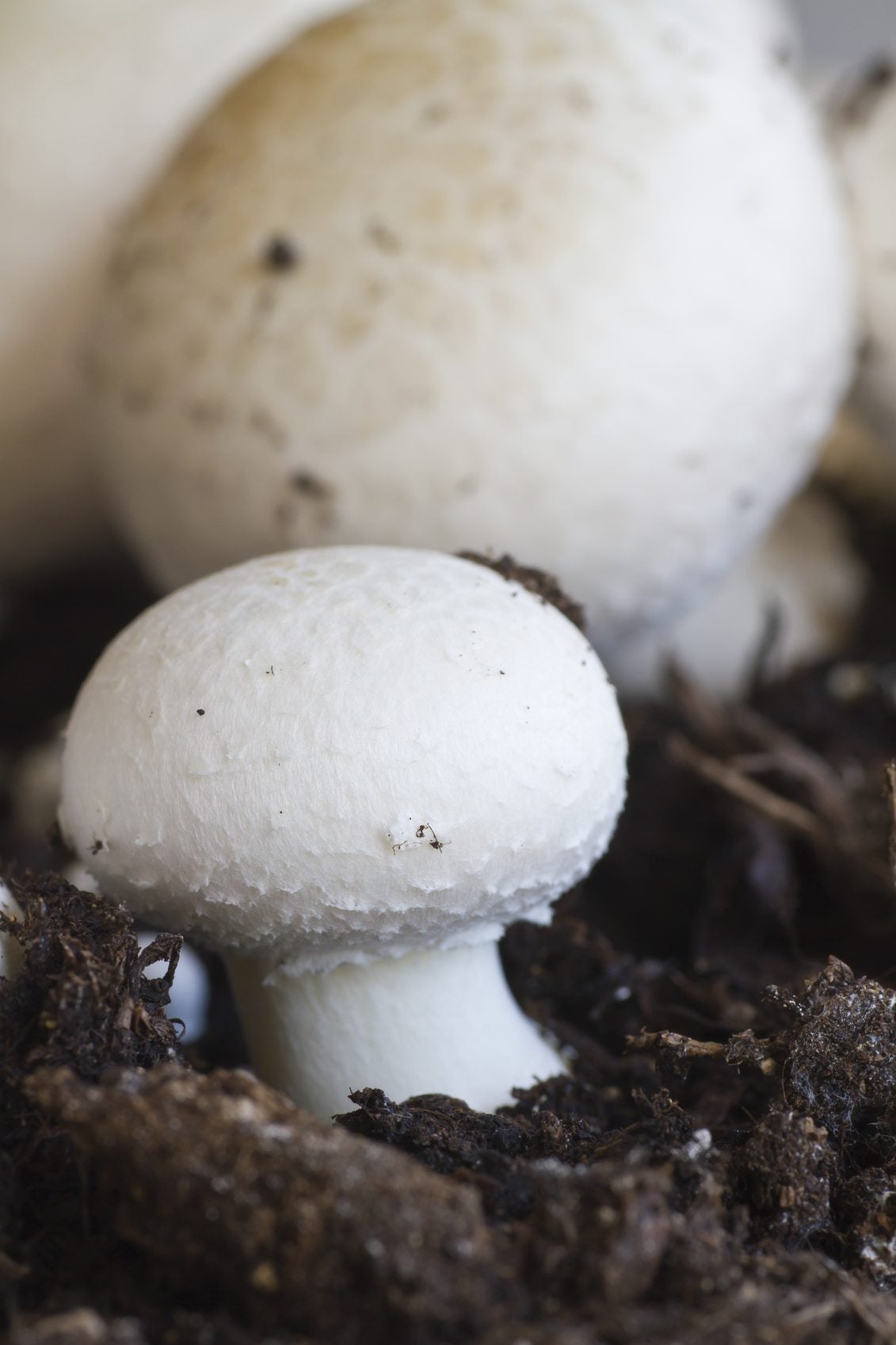Care Of Button Mushrooms: Learn About Growing White Button Mushrooms


Growing mushrooms is a little talked about side of gardening. While it may not be as conventional as tomatoes or squash, mushroom growing is surprisingly easy, versatile, and very useful. Growing white button mushrooms is a good place to start, since they’re both tasty and easy to maintain. Keep reading to learn more about how to grow white button mushrooms and some white button mushroom information.
Growing White Button Mushrooms
Growing white button mushrooms doesn’t require sunlight, which is especially nice for the indoor gardener whose windows are full up with plants. They can also be grown at any time of year, with winter actually preferable, making for a great gardening opportunity when everything outside is cold and bleak. Growing white button mushrooms takes spores, tiny microscopic things that will grow into mushrooms. You can buy mushroom growing kits made up of organic material inoculated with these mushrooms spores. White button mushrooms grow best in nitrogen-rich manure, like horse manure. To create an indoor bed for your mushrooms, fill a wooden box that’s at least 6 inches (15 cm.) deep with manure. Leave a few inches (8-9 cm.) of space below the rim of the box. Spread the inoculated material from your kit on the top of the soil and mist it thoroughly. Keep your bed in the dark, damp, and warm - around 70 F. (21 C.) - for the next few weeks.
Care of Button Mushrooms
After a few weeks, you should notice a fine white webbing on the surface of the bed. This is called mycelium, and it’s the start of your mushroom colony. Cover your mycelium with a couple inches (5 cm.) of damp potting soil or peat – this is called casing. Lower the bed’s temperature to 55 F. (12 C.). Make sure to keep the bed moist. It may help to cover the whole thing with plastic wrap or a few layers of wet newspaper. In about a month, you should start to see mushrooms. Care of button mushrooms after this point is very easy. Harvest them by twisting them out of the soil when you’re ready to eat them. Fill in the empty space with more casing to make way for new mushrooms. Your bed should continue to produce mushrooms for 3 to 6 months.
Sign up for the Gardening Know How newsletter today and receive a free copy of our e-book "How to Grow Delicious Tomatoes".

The only child of a horticulturist and an English teacher, Liz Baessler was destined to become a gardening editor. She has been with Gardening Know how since 2015, and a Senior Editor since 2020. She holds a BA in English from Brandeis University and an MA in English from the University of Geneva, Switzerland. After years of gardening in containers and community garden plots, she finally has a backyard of her own, which she is systematically filling with vegetables and flowers.